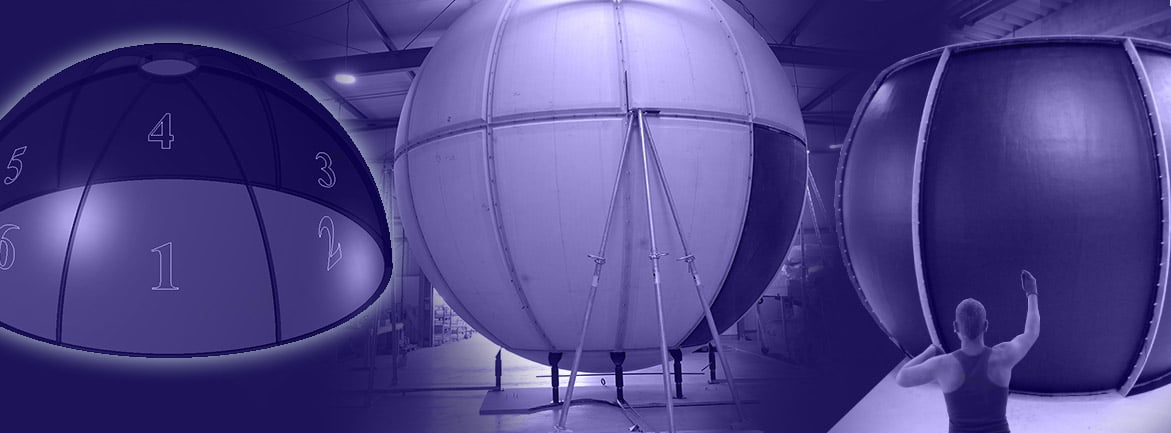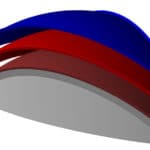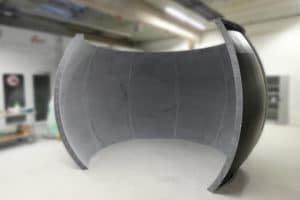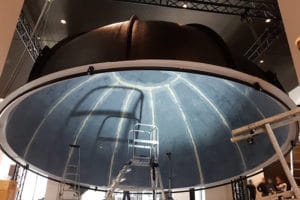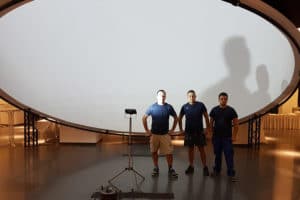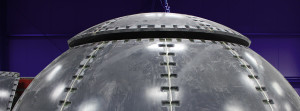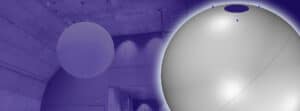Large-sized spheres are used as projection domes for simulators, domes or radoms.
In a projection dome, video recordings, animations or images are projected onto the inside of the spherical surface (dome, spherical section, curved screen). Planetariums are a well-known example.
For this purpose, the surface must be smooth and white in color. A radome (radar dome) is a closed enclosure for measurements or data transmissions. This protects the antennas and sensitive measuring devices from external weather influences. The materials GFRP and CFRP are excellently suited for the production of
such objects.
In principle, the aim is to produce large-format segments so that as few joints and seams as possible are visible. At the same time, large-format segmentation reduces assembly time. The width dimension is limited by the usual transport width (truck width 2.5 m). This results in usual surface sizes of approx. 10 m².
Before a segment can be made from GFRP or CFRP, a production mold must be created. Due to the three-dimensional geometry, it makes most sense for this large production mold to be given a stable substructure (wood-frame construction). Large-sized blocks of STYROPOR are then glued onto this substructure. It is a very economical material and can be milled very well. Nevertheless, STYROPOR has a very poor surface finish after
machining and is not compression resistant. Therefore, the polystyrene structure is milled off with an undersize of 12 mm. Then a special epoxy paste is applied to the premilled surface. This paste hardens within 24 hours and is then milled to the target dimension. The resulting surface is hard and can be brought to a finished state by sanding and painting. This makes it suitable as a production mold.
The individual segments for a dome can then be molded from this large-format production mold. First, a gelcoat with a layer thickness of approx. 0.7 mm is applied to the production mold. Then the glass fiber reinforced plastic is laminated on. The layer thicknesses vary between 4 – 8 mm, depending on the application. If higher demands are placed on the object (dynamic dome), a sandwich structure is executed. The individual segments of a dome are attached to the flange at the site by means of a screw connection or glued.
Pictures from the production:
